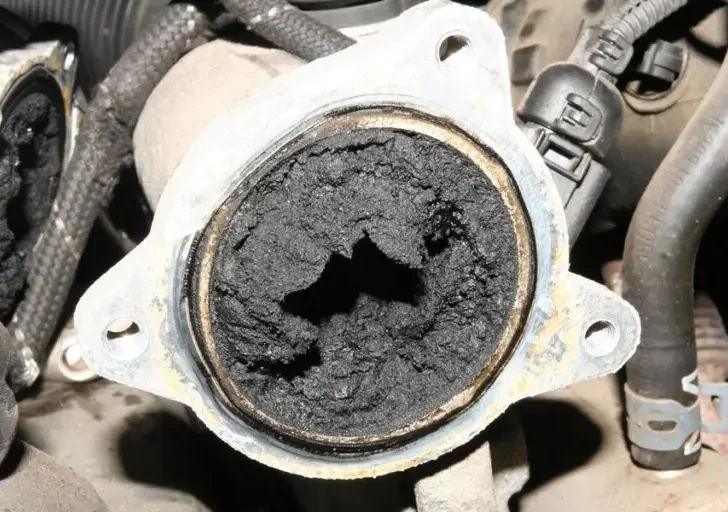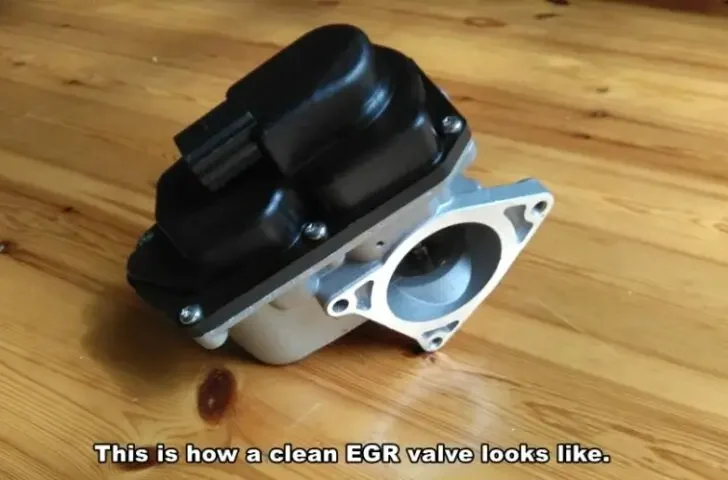Have you ever wanted to learn how to clean an EGR valve without removing it? It’s actually not as difficult as it may seem!
In this blog post, we’ll discuss the steps involved in cleaning an EGR valve without having to remove it from the vehicle.
We’ll cover why cleaning your EGR valve is important, what tools and supplies are needed for the job, and finally, walk you through the process step-by-step.
By the end of this blog post, you’ll be a pro at cleaning your EGR valve without removing it. So let’s get started!
Key Takeaway
- An EGR (Exhaust Gas Recirculation) valve is a component in a vehicle’s engine that redirects a portion of the exhaust gases back into the combustion chamber to reduce emissions and improve fuel efficiency.
- To clean an EGR valve without removing it, you can use a dedicated EGR cleaner spray or a mixture of vinegar and water to remove carbon deposits and improve its functioning.
- Signs that indicate the need for cleaning the EGR valve include difficulty starting the engine, rough idle, engine vibration, poor acceleration, check engine light, decreased mileage, and a smell of unburnt fuel from the exhaust.
What is an EGR Valve?
An EGR (Exhaust Gas Recirculation) valve is a component in a vehicle’s engine that redirects a portion of the exhaust gases back into the combustion chamber.
Its main purpose is to reduce nitrogen oxide (NOx) emissions by lowering the combustion temperature and preventing the excessive formation of these harmful pollutants.
The EGR valve helps to improve fuel efficiency, reduce emissions, and promote smoother engine operation.
It works by allowing a controlled amount of exhaust gases to mix with the incoming air-fuel mixture, reducing the concentration of oxygen and lowering the peak combustion temperature.
How To Clean an EGR Valve Without Removing It

Over time, the EGR valve gets dirty. The carbon builds on the walls of the EGR valve and it can cause premature wear. You should clean your EGR valve every 20,000 miles. The good thing is that you don’t have to remove your EGR valve in order to clean it. Here is how to clean an EGR valve without removing it:
1. Gather the needed cleaning supplies

In order to clean your EGR valve, you will need to have a clean microfiber towel, an EGR valve cleaner, and latex gloves. The EGR valve cleaner is a corrosive product, so it’s best if you wear gloves while cleaning the EGR valve. I personally use the LIQUI MOLY EGR valve cleaner ([amazon fields=”B00CR3RXTO” value=”thumb”]).
2. Locate the EGR Valve

Different vehicles will have their EGR valve in different places. The EGR valve is attached to the intake manifold. Usually, the EGR valve is located where on the backside of the engine.
If you do not have direct access to the EGR valve without removing a lot of parts, you can find the nearest access to the EGR valve. On some vehicles, the closes access point to the EGR valve is through the turbo.
3. Gain access to the EGR Valve

Gain access to the EGR valve by removing the cover. Be very careful not to lose any screws or clamps. Your EGR valve might not look like the one shown in the photo, but I am sure that it won’t be crystal clear.
4. Start the vehicle and rev it to 2000 RPMs

Start your vehicle and wait for it to reach the normal operating temperature. You will need someone to sit in the car and keep the RPMs in 2000. The sound of the engine will change because as you spray the EGR valve cleaner, the air-to-fuel mixture ratio will be different.
5. Spray half of the cleaning solution (250ml)

The EGR valve solution that I use comes in a 500ml can. Ideally, I use half of the can only. Make sure to spray little by little. You don’t want to overwhelm the engine. Short 1 second sprays will do the job just fine. Wipe the EGR valve and surrounding area with a microfiber towel.
6. Reinstall the EGR valve cover
Turn off the car and wait for the engine to cool down and then reinstall the EGR valve cover and any other parts that you had to remove to get to the EGR valve itself.
7. Scan the vehicle for error codes

At this point, the check engine light should turn itself off once the computer gets the information that the EGR valve has been cleaned. You can run diagnostics to double-check and see if there will be any other error codes associated with the EGR valve. This is the OBD2 scanning tool that I use ([amazon fields=”B01HNO5PLY” value=”thumb”]).
Signs That Your EGR Valve Needs Cleaning
- Rough idling or stalling of the engine.
- Reduced fuel efficiency.
- Increased emissions.
- Engine hesitation or lack of power.
- Check engine light is illuminated.
- Pinging or knocking sounds from the engine.
- Poor acceleration.
- Excessive exhaust smoke.
- Failed emissions test.
Rough idling or stalling of the engine:
If you notice that your engine is running unevenly or experiencing frequent stalls, it could be a sign that your EGR valve needs cleaning. The buildup of carbon deposits on the valve can disrupt the flow of exhaust gases and cause these issues.
Reduced fuel efficiency:
A dirty EGR valve can impact the fuel-air mixture in the engine, leading to inefficient combustion. This can result in reduced fuel efficiency, meaning you may need to fill up your tank more frequently than usual.
Increased emissions:
When the EGR valve is clogged or dirty, it may not function properly, causing an increase in emissions. This can result in the emission of pollutants such as nitrogen oxides (NOx) into the atmosphere, which is harmful to the environment.
Engine hesitation or lack of power:
If your vehicle experiences hesitation or a noticeable lack of power during acceleration, it could be a sign of a dirty or malfunctioning EGR valve. A dirty valve can disrupt the engine’s performance, leading to these symptoms.
Check engine light illuminated:
A dirty EGR valve can trigger the check engine light on your dashboard. The vehicle’s onboard diagnostic system may detect insufficient flow or other issues related to the EGR valve, indicating the need for cleaning or potential repair.
Pinging or knocking sounds from the engine:
When the EGR valve is not functioning properly, it can lead to abnormal combustion inside the engine. This can result in pinging or knocking sounds, which may indicate that the valve requires cleaning to restore normal engine operation.
Poor acceleration:
A clogged or dirty EGR valve can restrict the flow of exhaust gases back into the engine, affecting its ability to generate power. As a result, you may experience sluggish or poor acceleration when pressing the gas pedal.
Excessive exhaust smoke:
If you observe thick black smoke coming from your vehicle’s exhaust, it could be a sign of a blocked EGR valve. The buildup of carbon deposits can cause incomplete combustion, leading to the emission of dark smoke says WikiHow.
Failed emissions test:
During an emissions test, a dirty EGR valve can contribute to higher pollutant levels, such as nitrogen oxides (NOx). This can cause your vehicle to fail the emissions test, indicating the need for cleaning or repair of the EGR valve.
What Happens If The EGR Valve Is Clogged?
If the EGR valve is clogged, it can lead to several issues, including:
- Reduced engine performance and power.
- Rough idling or stalling.
- Increased fuel consumption and decreased fuel efficiency.
- Engine misfires or hesitation during acceleration.
- Overheating of the engine.
- Increased emissions, which can potentially lead to a failed emissions test.
- Illumination of the check engine light.
- Potential damage to other engine components, such as the catalytic converter.
What Causes an EGR Valve To Become Clogged?
There are several common causes of EGR valve clogging, as sourced from the information found on the web:
- Faulty Temperature Sensor: A malfunctioning temperature sensor can lead to improper EGR valve operation and cause carbon buildup.
- Clogged EGR Pipe: Accumulation of carbon deposits or debris in the EGR pipe can restrict airflow and lead to valve clogging.
- Sticky EGR Valve: Over time, the EGR valve can become sticky due to carbon buildup, preventing it from opening and closing properly.
- Increased Particulate Matter: When the EGR valve becomes blocked or clogged, it may remain open, resulting in an increase in particulate matter in the exhaust gas.
- Incomplete Combustion: If there is incomplete combustion in the engine, it can cause gunk to build up in the EGR valve, leading to clogging.
- Small Cross-Sectional Area: Some engines with small cross-sectional areas in the valve body or inlet tract, such as certain BMW and Td4 engines, are more prone to EGR valve blockage.
- Lack of Preventive Measures: Failure to take preventive measures like installing a catch can or ensuring a clean air filter can contribute to EGR valve clogging over time.
Please note that these are general causes, and specific factors may vary depending on the make and model of the vehicle says WikiHow.
What Is The Best EGR Valve Cleaner
Liqui Moly is a German company that produces a lot of car cleaning products. One of them is the EGR valve cleaning product. I personally have used this product for cleaning my EGR valve without removing it
. The canister is 500ml and you can use it to clean your EGR valve twice. The Liqui Moly EGR valve cleaning product will not damage any seals on the engine. It cleans nicely and is very easy to use. After you used half of the cleaning product, store it for your next EGR valve cleaning.
How Often To Clean EGR?
The EGR valve and system passages should typically be cleaned every 18 to 24 months as part of your regular vehicle maintenance schedule.
Car manufacturers often recommend cleaning the EGR valve and passages every 50,000 miles or fewer.
FAQs
Q: What is an EGR valve?
A: An EGR valve, which stands for Exhaust Gas Recirculation valve, is a component in a vehicle’s engine that recirculates a portion of the exhaust gases back into the combustion chamber. This helps to lower the level of harmful emissions and reduce the formation of nitrogen oxides.
Q: Why is it important to clean an EGR valve?
A: Over time, carbon deposits can build up on the EGR valve, causing it to become clogged. This can lead to poor engine performance, increased emissions, and even engine damage. Cleaning the EGR valve helps to maintain its proper functioning and prevent these issues.
Q: Can I clean an EGR valve without removing it?
A: Yes, it is possible to clean an EGR valve without removing it from the engine. There are specific cleaning solutions and sprays available that can be used to clean the valve while it is still installed in the vehicle.
Q: How do I clean an EGR valve without removing it?
A: To clean an EGR valve without removing it, you can follow these steps: 1. Locate the EGR valve in your vehicle’s engine. 2. Disconnect any hoses or wiring connected to the valve. 3. Use a cleaning solution or spray specifically designed for cleaning EGR valves. 4. Spray the cleaning solution onto the valve, focusing on the areas with carbon buildup. 5. Use a brush or toothbrush to scrub the valve gently. 6. Wipe away any excess cleaning solution and carbon deposits. 7. Reconnect any hoses or wiring that were disconnected. 8. Start the engine and allow it to run for a few minutes to ensure proper functioning.
Q: What type of cleaner should I use to clean an EGR valve?
A: It is recommended to use a specific EGR valve cleaner that is designed to dissolve carbon deposits. These cleaners are formulated to be safe for use on the valve and will effectively remove the buildup without causing any damage.
Q: How often should I clean the EGR valve?
A: The frequency of cleaning the EGR valve may vary depending on the vehicle and its usage. As a general guideline, it is recommended to clean the EGR valve every 30,000 to 50,000 miles or as specified in the vehicle’s maintenance schedule.
Q: What are the signs of a bad EGR valve?
A: Some common signs of a bad EGR valve include rough idle, engine hesitation or stalling, increased emissions, poor fuel efficiency, and the presence of a check engine light. If you experience any of these symptoms, it may indicate a faulty EGR valve that needs to be cleaned or replaced.
Q: Can a dirty EGR valve affect engine performance?
A: Yes, a dirty EGR valve can significantly affect engine performance. It can disrupt the proper flow of exhaust gases, leading to issues such as reduced power, rough idling, decreased fuel efficiency, and increased emissions.
Q: Can I clean or replace the EGR valve myself?
A: Cleaning or replacing the EGR valve can be done by yourself if you have some basic mechanical knowledge and the right tools. However, if you are not confident in your abilities, it is recommended to consult a professional mechanic to ensure the job is done correctly.
Q: Is it necessary to replace the EGR valve if it’s dirty?
A: In most cases, cleaning the EGR valve is sufficient to restore its proper functioning. However, if the valve is severely damaged or cannot be effectively cleaned, it may be necessary to replace it with a new one.
In Conclusion
In conclusion, cleaning an EGR valve without removing it is a great way to prolong the lifespan of your vehicle.
The process can be completed relatively quickly and does not require extensive knowledge or training.
By following the steps outlined in this article, you can ensure that your engine will remain clean and operating smoothly for years to come.
